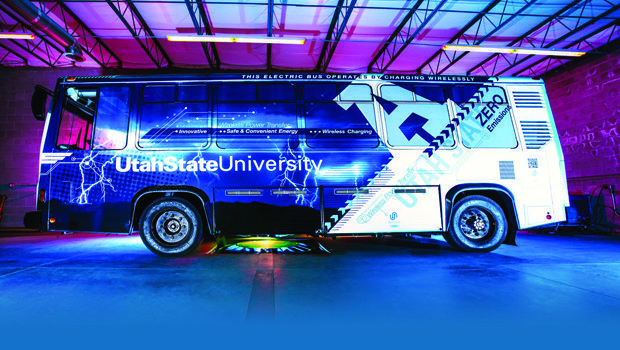Going Electric
Tech Advances May Drive Eco-Transportation Mainstream
With the opening of three new Supercharger stations for its luxury Model S on the East Coast last January, electric carmaker Tesla now operates a total of nine stations serving its electric sedan owners between San Francisco and Los Angeles and between Boston and Washington, D.C.
That same month, Nissan announced plans to add 500 public stations for electric vehicle (EV) fast-charging, which provide 80 percent of a charge in less than 30 minutes, tripling the number of such stations by mid-2014, including the first ones in our nation’s capital. It also aims to increase the presence of charging stations at workplaces.
These steps in the growth in infrastructure are easing Americans’ transition from gas-powered to electric and hybrid cars. Already, more than 7,000 public charging stations dot the country, from Custer, Washington, to Key West, Florida (plan a route at Tinyurl.com/MobileChargingStations). Meanwhile, most EV owners simply charge up at home.
Driving Excitement
Excitement has risen in recent years as electric car manufacturers have rolled out more affordable, family-friendly versions like the Nissan Leaf and Mitsubishi i-MiEV. Honda is testing its Fit EV in 2013; with only 1,100 available to lease, opportunities to try out the fun, sporty car are at a premium. These models offer considerable fuel efficiency, easy charging and even apps to check their charge, yet eco-vehicles continue to represent a fraction of overall car sales.
In a 2012 report, the U.S. Energy Information Administration noted that fewer than 10,000 EVs were sold in 2011. While sales of all-electric vehicles improved slightly in the first half of 2012, dealers saw nowhere near the major jump produced by plug-in hybrids like the Chevrolet Volt and Toyota Prius.
Obstacles to a stronger EV sales upswing include purchase price, charging time and driver anxiety about range. “The battery is a big reason the cars are expensive,” says Jim Motavalli, author of High Voltage: The Fast Track to Plug in the Auto Industry. “More public charging is coming,” he adds, “but it doesn’t matter as much as a cheaper upfront cost and longer range—200 miles plus—instead of the standard 100 now.”
Mass Transit
Almost any form of public transportation can run on alternative power—electricity or natural gas, propane, biodiesel or hydrogen. “The big hurdle,” says Motavalli, “is having enough stations to rival the 160,000 conveniently located gas stations we already have.”
Biodiesel buses have been in use for several years at locations like Colorado’s Aspen resorts and Harvard University. Musicians Willie Nelson and Jack Johnson each rely on a biodiesel tour bus. Many school buses—including those in Charleston, West Virginia; Medford, New Jersey; and San Diego, California—have been converted to biodiesel, significantly reducing the toxic emissions and particulate matter children breathe in at bus stops. Some school systems in Michigan and New York use hybrid-electric buses.
Vehicle fleets are also joining the greening trend. Kansas City, Missouri-based Smith Electric Vehicles already produces all-electric, zero-emission trucks for Coca-Cola, Frito-Lay, Staples and the U.S. Marines.
The need for regular recharging, a former obstacle for deploying electric buses for public transportation, has been cleared by Utah State University’s (USU) Aggie Bus. The groundbreaking, all-electric bus has a plate that draws off electricity across an air gap when it pauses over another plate installed at a bus stop. In mid-2013, WAVE, Inc., the university’s offshoot company behind the project, will launch a commercial on-campus demonstration in partnership with the Utah Transit Authority, via a 40-foot-long transit bus and 50 kilowatts of wireless power transfer.
Such wireless technology could also revolutionize electric-car recharging. “EV owners and operators will now be able to simply drive over a pad in the ground to recharge their batteries, the benefits of which reach far beyond convenience,” says Robert T. Behunin, Ph.D., USU vice president of commercialization and regional development.
Regarding greening travel by train, Europe is leagues ahead of America; half its trains are now electric. A new regenerative braking system being developed by Deutsche Bahn and Tognum could turn all trains into hybrids. Its innovative drive system converts the kinetic energy produced during braking into usable electrical energy, reducing emissions and saving up to 25 percent in fuel consumption. The first such converted hybrid train testing the technology began carrying passengers in Germany in January 2013.
The International Energy Agency’s 2012 EV City Casebook reports that, “Electric vehicles represent one of the most promising technology pathways for cutting oil use and CO2 on a per-kilometer basis. The experiences of urban drivers and the pioneering policies of local governments can help accelerate the transition to clean and sustainable mobility.”

























